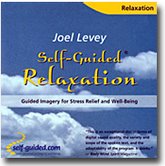Mindfulness Exercises
The following mindfulness exercises will help you bring greater balance to your life by becoming more aware of your breathing, your body, and your thoughts.
Mindfulness Exercise #1 -- Breathing
The greatest strategy we have to offer for whenever you're feeling particularly frazzled, scattered, and out of balance is simply to return to the awareness of your breathing. Like an anchor in the midst of a stormy sea, breath awareness is a balancing force for the mind, anchoring you in the present.
Each breath teaches us many lessons about balance, reminding us of our interconnectedness with the whole world. Each breath also affirms that our life depends upon finding a balance between taking in and putting out, and reminds us that "inside" and "outside" are dancing with each other, and that they can be harmoniously reconciled as long as we can create the space and time for both inner and outer.
With each inhalation the lungs fill and the heart rate increases a bit to counteract the pressure of the lungs upon it. With each exhalation we release, relax, and our heart rate slows down. Similarly, we too can find greater balance in our lives when we can harness the energy, and exhilaration of initiating some course of action, and then, having given it our complete attention, we relax and let go into a joyful flow of awareness, action, and discovery.
This mindful breathing exercise accomplishes one of the greatest miracles of life: It brings your mind and body into synch with each other and into focus, so that your mind-body-spirit can work together with balanced presence. Because your mental functioning and quality of consciousness is so closely linked to the way you breathe, mindful breathing can have a focusing, calming, and vitalizing effect for your whole mind and body.
Mindfulness Exercise #2 -- Body
The second base of mindfulness is to be mindful of your body. Right now as you sit here, become aware of your posture. Notice what the sensations of your hands are, and feel the sensations of your bottom touching the seat. Smile to yourself as you come out of the clouds of your thoughts and land with full awareness in your body.
Throughout the day, one of the simplest ways of getting focused and mastering stress is to become mindful of the position that your body is in.When you pay attention to your body frequently throughout the day, you recognize the accumulation of tensions and you're better able to let them go more easily and swiftly. As a result, you are less likely to accumulate a lot of tension and, therefore, less likely to develop stress-related illnesses. In this way, mindfulness is the basic foundation of preventive medicine.
There's a very simple, powerful method for weaving body awareness into your daily life. As you breathe, feel the rising and falling of your chest or abdomen. Feel the stream of sensations as the breath flows into and out of your nostrils. At the top of the inhalation, in the pause, tune in to a touch point: notice your bottom touching the chair, or the sensations of your hands or your lips touching. Then, ride the wave of sensations of the outflowitig breath, and at the bottom of the exhalation, tune again into a moment of mindfulness of your body.
Mindfulness Exercise #3 -- Thoughts
Having built a foundation of mindfulness with your breath and body, the next base of mindfulness to develop is that of thinking. According to some researchers, 90 percent of the thoughts we think are reruns of thoughts we've already had before!
Begin by sitting quietly, focusing your attention with a few moments of mindful breathing. Build the strength and continuity of your attention by breathing your mindful awareness into this moment, and letting it continue as an unbroken stream of awareness into this next moment. Stay fully focused and mindfully present with each moment and each breath.
Now, rest your hands on your knees, right hand on the right knee, and left on left. As you breathe, draw your attention to the stream of your thoughts. Staying mindful of each moment, whenever you notice a thought that's a memory of the past, tap gently with your left hand, indicating to yourself that you're aware of a special kind of thought called a memory. If you like, you can anchor it by saying mentally to yourself, past. And whenever you notice that you're having a thought that's a fantasy of the future, then tap on your right knee and if you like, mentally note future. Whenever your attention is totally focused here and now in the present moment, just smile to yourself and enjoy the ride.
As thoughts arise, just view them as clouds floating through the sky of your mind, or as different taxi cabs racing here and there in the mind. Remember not to hitch a ride on any of them! Avoid the tendency to mindlessly climb aboard and get lost in those thoughts. Simply let the thoughts come and go. Stay mindfully focused, and keep tapping your left knee for thoughts of the past and your right knee for thoughts of the future.
After a few minutes, reflect to yourself. Has your attention been drawn more to memories of the past, to fantasies or plans for the future, or balanced more in the present? Objectively, learningfully, and without criticism, simply notice which ways your attention is most drawn.
As your powers of mindfulness grow, you'll gain more and more insight into how your mind works. Understanding more and more about your patterns of attention, you'll come to a clearer recognition of the patterns of mind that you'd like to strengthen as well as the patterns of mind that you'd like to reduce.
[Adapted from the book "Living in Balance" by Joel Levey
and Michelle Levey]
